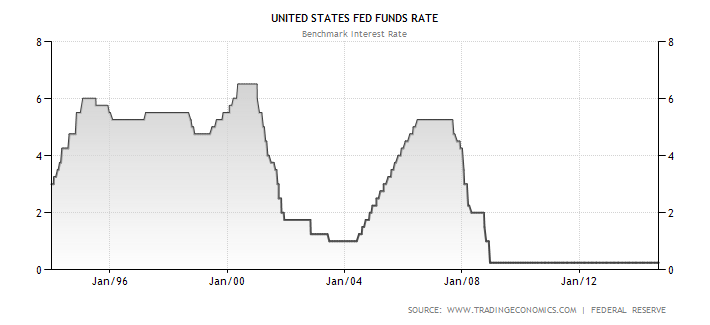The Australian dollar lost more than one US cent this morning after the US Federal Reserve said it would maintain a commitment to keep interest rates near zero for a “considerable time” after finishing its easing program next month.
The dollar fell from 90.90 in Australia yesterday, to around 89.60 US cents this morning after the Fed’s post-meeting statement was released and chair, Janet Yellen held her regular quarterly media conference in Washington.
Gold fell to $US1,229 an ounce in New York after hours trading, and oil fell to just on $US94 a barrel for US crude. The Dow rose 30 points, Nasdaq 10 and the key S&P 500 regained the 2,000 point mark to end on 2,002, up 3 points.
The two day meeting of the Fed which ended early Thursday morning, has resulted in another each-way bet from the central bank on rate rises – a stance it has been following for much of the year and designed not to spark a sell off in bonds markets in the US and the rest of the world.
The US central bank said in its post meeting statement the US economy is expanding at a moderate pace and inflation is below its 2% a year goal, and while rates would not be rising soon, they will almost certainly start rising next year, and continuing doing so for the next two years at least, barring a slowdown in economic activity.
In its post meeting statement, the Fed said it expects to end the asset purchase program at its next meeting at the end of October if economic data doesn’t surprise over the next six weeks.
But it’s clear the Fed is on track to lift rates in 2015 – we don’t know which month – but a rate rise is very much on the cards, a realisation which pushed the US dollar higher, the Australian dollar lower, and left key commodity prices under pressure.
When will the Fed raise rates?

Economists said that by leaving in the language about a “considerable time,” the Fed again signalled it’s still not prepared to raise the fed funds rate earlier than markets expect.
Keeping the language was seen as a victory for the so-called doves on the Fed’s key rate setting committee. The Federal Funds rate has been near zero since 2008 (two so-called hawks dissented from the latest decision, wanting rates to rise earlier).
In a news conference after the meeting, Ms Yellen said the labour market still has room to improve and most Fed officials want to see more evidence of progress before acting.
Things will depend on how the economy evolves and that will change over time and "there is a good deal of uncertainty associated with it,” she said. But the Fed also sent some hawkish signals.
A majority of 10 Fed officials expects interest rates to rise to a median rate of 3.75% by the end of 2017, according to the central bank’s updated “dot plot” (a graph of where the Fed members see rates rising). Only four expect rates to be below that threshold.
This more than any other part of the statement drove the US dollar higher and the Aussie lower.
The Fed decision saw a turnaround in sharemarket futures trading, with a small single digit increase becoming a small single digit fall in a few minutes. That was then reversed in trading in Australia and the market will start flat to a small rise of 3 points.
But it is likely the market will be weak this morning and that will add to the losses for the ASX 200 Index which lost 0.7% yesterday to close at 5407.3 points.
That took the losses over the past three days to 2.2%, as investors bailed out of local banks, especially the big four.
The All Ordinaries Index which lost 0.6% yesterday ending at 5411.4 points, has lost around 2% in the same time.
Big falls by the banks and stocks like Telstra again sent the market lower.
The big four banks have taken a battering from worried investors in the past two and a bit weeks. The big four are down more than 5% so far in September.
Yesterday, the big banks led the market lower with the Commonwealth Bank dropping 1.1% to end on $77.35, NAB shares fell 1.4% to end the day on $33.18, Westpac shares lost 1.8% to $32.90 and the ANZ fell 2.2% to $31.43, and Telstra lost 0.7% to end on $5.39.
A drop in the world iron ore price didn’t worry markets, nor did reports that the Chinese central bank was pumping $US81 billion into the country’s major banks to re-lend, a move equal to a half a per cent cut in the reserve ratios of the big banks.
Despite a dip in the global iron ore price, big miners, such as BHP Billiton added 0.3% to $35.84, while Rio Tinto added 0.4% to end the day on $62.05.
Premier Investments was the top stock in the ASX 200, up 7.8% at $10.60 after reporting a solid rise in 2013-14 profit and promising more to come.













